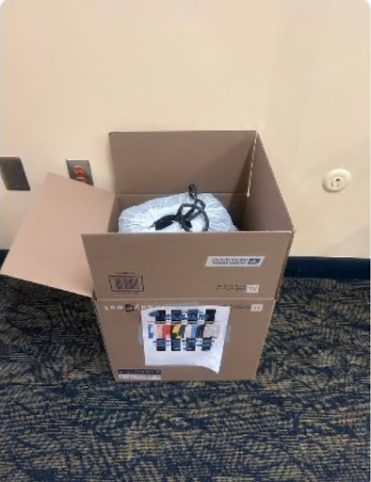As Election Day approaches, advocacy groups across the state prepare to make their case on Issues 1 and 2.
In less than two weeks, voters may dramatically change Ohio law. Issue 1 would enshrine abortion rights into the state’s constitution, and Issue 2 would legalize recreational marijuana.
Officially titled “The Right to Reproductive Freedom with Protections for Health and Safety,” Issue 1 would ensure Ohioans the right to make and carry out their own reproductive decisions concerning contraception, fertility treatment, continuing one’s own pregnancy, miscarriage care and abortion.
Additionally, if approved, the state shall not penalize an individual’s voluntary exercise of this right or a person or entity that assists them. Abortion may be prohibited after fetal viability, or when a fetus can survive outside the uterus, unless it is necessary to protect the pregnant patient’s life or health.
A “Yes” vote supports this amendment. A “No” vote opposes the amendment, leaving current state laws intact. Ohio currently prohibits abortion after 22 weeks of pregnancy.
A 2019 ban on abortions after six weeks without exceptions for rape or incest remains on hold awaiting litigation by the Ohio Supreme Court. The state initially started enforcing the ban following the United States Supreme Court’s Dobbs v. Jackson decision in 2022.
Sam Zern, a graduate student in Kent State’s Master of Public Health program and a regional field organizer for Ohioans United for Reproductive Rights, the coalition that proposed the amendment, said Ohioans are ready to enshrine the right to abortion into law.
“What we’re trying to do now is not just go back to what it was before Dobbs, because it was never enough before Dobbs,” Zern said. “What we’re trying to do is lay the groundwork for something even better.”
Since September, Zern has taken to shoe leather campaigning – making calls, knocking on doors and meeting face-to-face with voters.
“We’re ready to vote yes,” she said.
However, other groups have also picked up their flyers in anticipation for November. Mark Harrington, the executive director for Created Equal, an anti-abortion advocacy group known for bringing graphic displays to college campuses, said he has spent the last few months attempting to persuade voters the amendment is “wrong for Ohio.”
“Ohio has been historically a pretty pro-life state, and we’ve put into effect several provisions to protect women and children over the last several decades through our state house,” Harrington said. “And that’s how abortion policy should be formulated, not through an attempt at a one-size-fits-all all, permanent, constitutional amendment.”
Harrington supported the Republican-backed referendum in August that would have raised the threshold for constitutional amendments to pass from 50%+1 to 60%. That referendum failed, clearing the way for November’s election.
Harrington estimated 72% of the voters his organization spoke with indicated they planned to vote “No” on the issue. However, recent polling from the Baldwin Wallace Community Research Institute showed 58% of likely voters favor passing the amendment.
That same poll showed 57% of likely voters supported Issue 2, an initiative that would allow Ohioans age 21 and over to buy and possess up to 2.5 ounces of cannabis flower and 15 grams of extract.
Under the proposed initiative, which the state legislature can amend should it pass, the state will collect a 10% cannabis tax on adult-use sales. An Ohio State study projected potential annual tax revenue from adult-use cannabis in the state ranges from $276 million to $403 million in year five of operations.
Of these funds, 3% would go to regulatory and administrative costs, 25% to drug prevention, 36% to municipalities allowing marijuana sales and 36% to social equity and jobs programs.
“We’re gonna put in place a best-in-class regulatory framework in our adult-use market that other states, we believe, will ultimately model their programs under,” said Tom Haren, the spokesperson for Regulate Marijuana Like Alcohol, the coalition spearheading the initiative.
A “Yes” vote supports changing the Ohio Revised Code to legalize, regulate and tax the cultivation, manufacturing, testing and sale of marijuana to adults age 21 and over, which would make it the 24th state to legalize adult-use marijuana. A “No” vote supports keeping Ohio’s marijuana laws as the status quo.
Dwayne Siekman, the co-founder of Bliss Ohio, Kent’s only dispensary, said he supports Issue 2. As the proposed initiative stands, adult-use sales will build upon Ohio’s existing medical marijuana program, allowing current medical dispensaries to expand services for recreational sales.
“If Issue 2 passes in November, there will be several months before any production, processing and retail sales of recreational cannabis happens in Ohio while the state writes the rules,” Siekman wrote in an email to KentWired. “Should Issue 2 pass, Bliss Ohio will follow all state-established rules, guidelines and requirements and seek approval to sell recreational cannabis at our dispensary in Kent.”
The proposal’s social equity and jobs program also gives preference to those with a social or economic disadvantage applying for sale and cultivation licenses. However, though the law removes criminal liability for possession and use of marijuana, it does not reverse previous convictions. Haren said citizen-backed initiatives are limited to one issue on the ballot, and he would support efforts to overturn convictions.
“Anytime you’re talking about regulating adult-use sales of marijuana, you can’t ignore the harms that prohibition has caused over the last several decades,” Haren said. “So, we really tried to focus on both representation within the industry, and also restorative justice.”
The impact of legalized adult-use marijuana may be minimal on college campuses across the state.
“As peace officers in the state of Ohio, we enforce the criminal code in the state of Ohio,” said Chris Jenkins, assistant director of public safety and captain of Kent State Police. “The university has other requirements to meet from terms of not just the state of Ohio’s rules and regulations but also the federal government. And currently, we’re in this juxtaposition where the state of Ohio’s laws on controlled substances differs from the federal government.”
Federal guidelines require universities receiving federal funds to classify marijuana as an illicit substance – and students found possessing or using it can face disciplinary actions through the Office of Student Conduct. While university police may issue referrals to the office, students will not face criminal charges if their conduct is within state law.
Portage County voters can vote early until Nov. 5 at the Board of Elections office located at 449 S. Meridian, Ravenna, OH. On Election Day, the polls are open from 6:30 a.m. to 7:30 p.m., and voters must vote at their designated polling location.
Alton Northup is a staff reporter. Contact him at [email protected].











